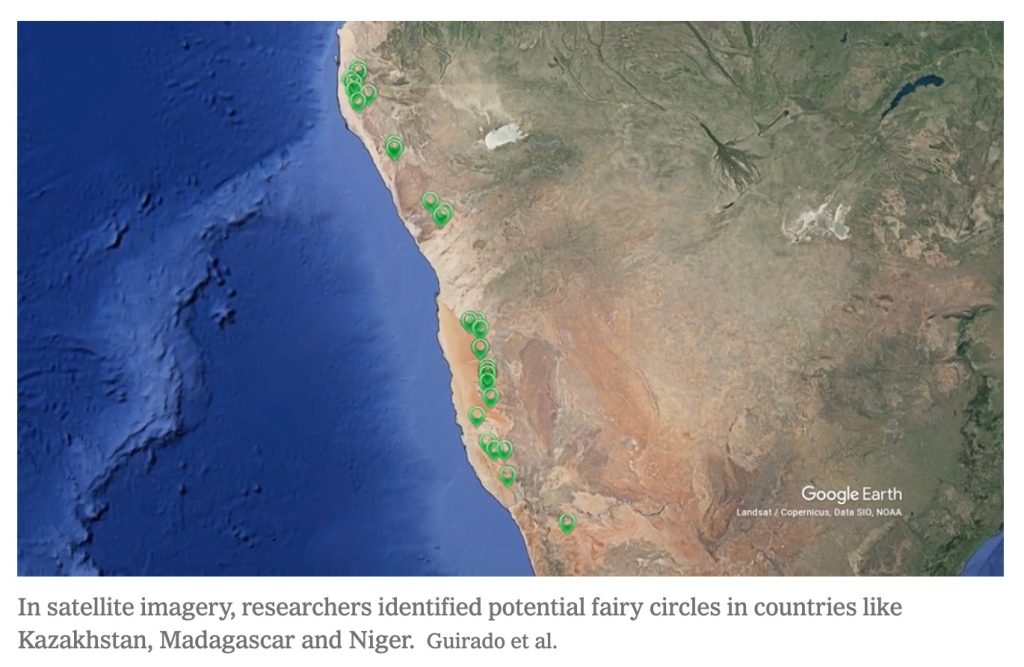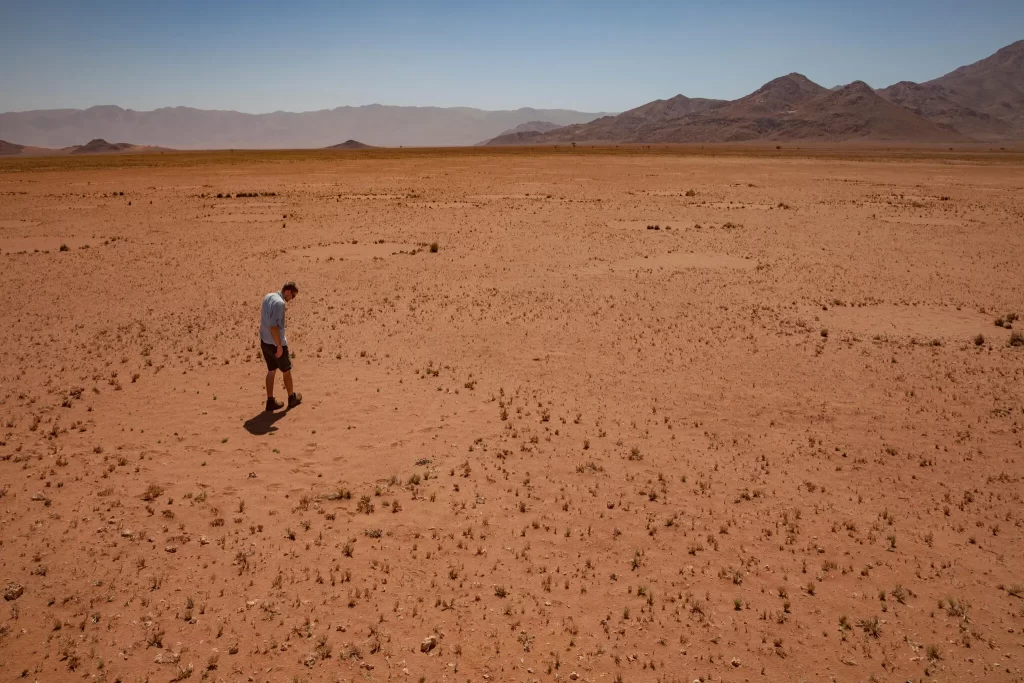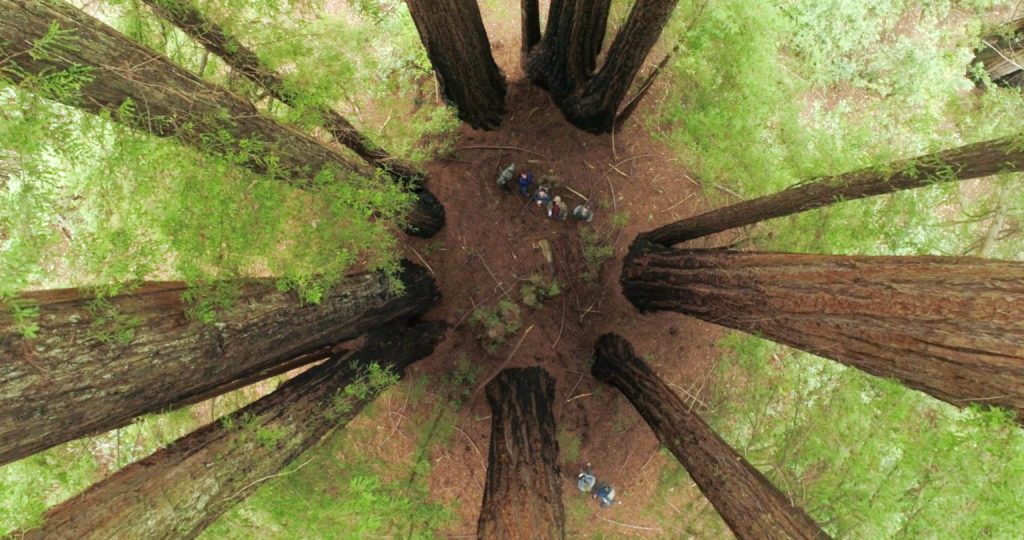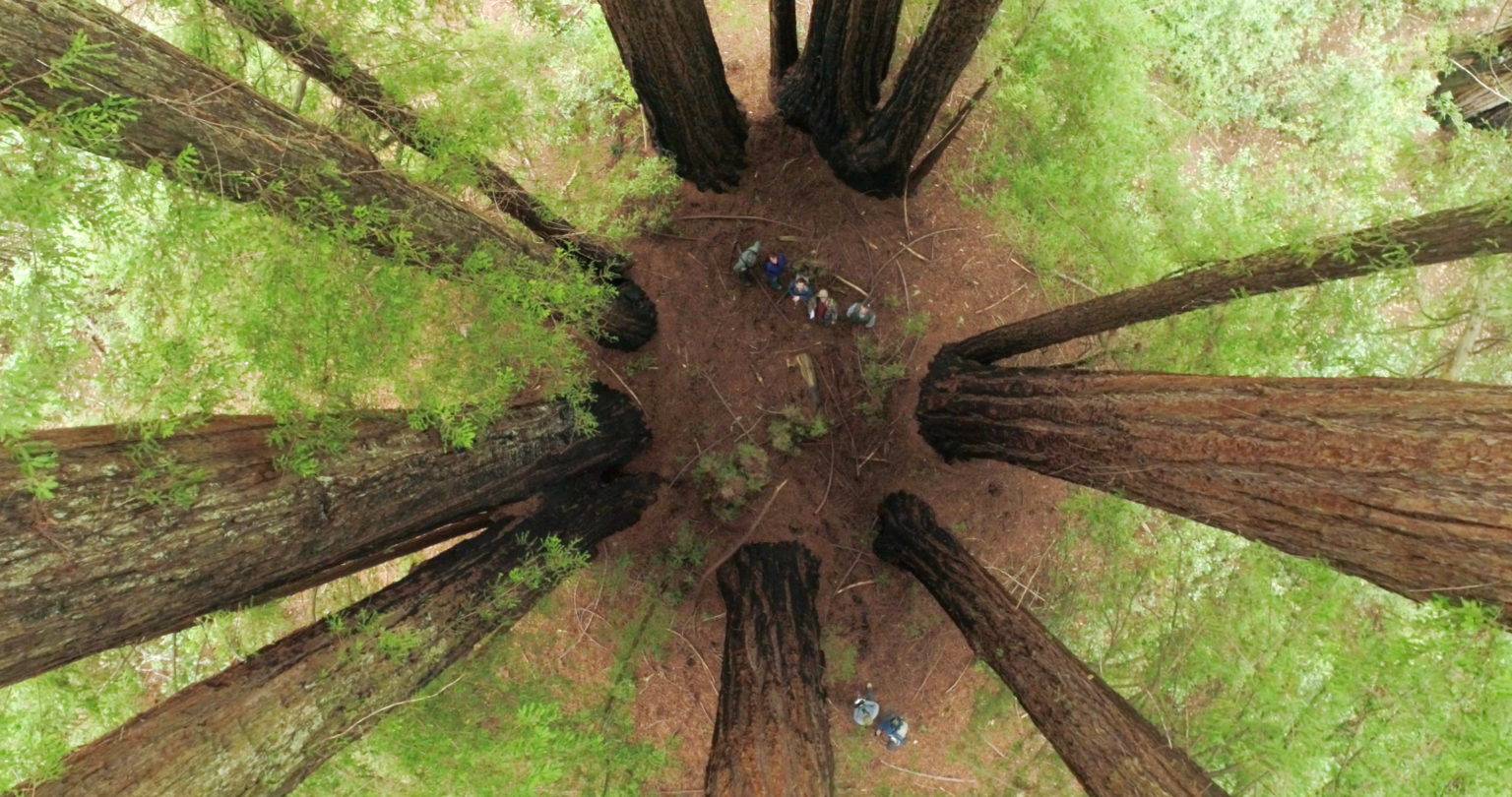This post is a tale of daily synchronicity, earth science, and some reading recommendations.
I fell asleep last night reading Tales of the Fae: Modern Fae Novella Anthology, by E. Menozzi. Menozzi is a writer (and athlete) with exuberant personal energy. I met them recently on the Writing Excuses Retreat. I’ve been devouring their Modern Fae Series since waving farewell on the last day of our Alaskan cruise.
When I woke up, my inbox was an experience of synchronicity about fairies (zeitgeist? internet tracking? assisted intelligence?).
Like many creatives, I’m fighting against the soul-sucking habit of checking email and reading the news first thing every day. Today I lost that battle and found myself immersed in the Midnight Star-level headline: Satellites Show Fairy Circles in More Parts of the World.
The NYT app displays a slowly rotating Earth, covered in small green geo-location marks. The embedded video rotates slowly and zooms in on each group of “strange, polka-dot-like patterns of barren earth” in Madagascar, Namibia, and Australia.

Wait, what?
The fairy rings I’ve personally danced in have been guarded by toadstools in lush meadows. Or they’ve hosted drum circles between redwood trees. At my alma mater, UC Santa Cruz, hanging out in circular sacred groves was just something to do on Friday nights. What would fairies want with all this ‘barren earth’ business?
Clearly, I had to read the article.
This ‘news’ is what I deem (in my head only–I have liberal arts and social science degrees– I’m not a scientist), variable scientific news. News from a science communication point of view: It has science in it, but the article itself is meant to interest people; it isn’t about the what? how? and why do I care? of the science itself. How much science you actually get in this type of article, and specifically whether or not it explores a hypothesis about any particular given variable, is variable.
Fun News to Share
Still, the idea was novel enough for me to spin the silliness out of my head, so I told my husband, Mark, “I’m reading an article in The New York Times about new kinds of fairy rings. They’re found in deserts all over the world and they don’t know why.”
(This was an erroneous comment on my part; rings and circles–not the same, scientifically speaking.)
Mark, much more likely to be deemed a scientist by anyone who’s met him, replied simply, “I’m sure it’s caused by the same thing.”
I looked up at him, wondering why am I ever surprised that he just knows stuff? “Which is what,” I asked.
I can always count on my beloved mancyclopedia to know a little bit about just about anything. In this case, he sat and drank his morning tea with me, explaining the way grass dies and turns into thatch, spurring fungi in the soil into a feeding frenzy. The fungi expand from the center, moving outward, dining on turf that has died, often due to depleting the nutrients in the soil. As the fungi break down the dead grass, they replenish nitrogen as a byproduct and encourage healthier, greener grass to grow.
“But these circles are in the desert,” I said. “Where nothing grows.”
I sent him the article, which led to a secondary discussion about naming things. Because the article wasn’t even mostly about finding new circles, but about the “sometimes fractious fraternity of fairy circle researchers.”
Scientists really like to argue about names and categorization, for reasons that definitely include turf:
“Other researchers who have worked on fairy circles say that until field work is performed, it remains to be seen whether any of the newly identified circular, bare patches are true fairy circles.”
NYT, Satellites Show Fairy Circles in More Parts of the World
Link Circles
There’s another link in the article (my husband read it before I even noticed it was there) to more of the actual research. In fact, when I searched NYT for the term ‘fairy circle,’ FOUR different articles have been published since 2017 about this unexplained desert phenomenon.
Mark, continuing his googling from another part of the house, texted:
“There’s actually an interesting distinction they make between “true” fairy rings, and ‘plant rings’ like in Australia. They [the articles] say a lot about what has been ‘eliminated’ as a cause of the Namibian rings, but as a completely untrained ecologist, it’s pretty obvious where they’ve gone wrong 😃”
“Not taking into account the fairies? I bet they didn’t even ask them,” I texted back.
I care about the fairies, and was looking up basics about the rings, finding oddly enjoyable lawn care articles:
How to get rid of fairy ring in the lawn
Breaking up a dance party is difficult, but breaking up a dance party where humans aren’t welcome presents its own challenges.
Fairy ring removal can be difficult and might even require the helping hands of a professional, depending on the disease’s severity. Or, if you’re suspicious about the folklore, you might not want to risk falling inside the ring. Hiring a trained professional can help ease those worries.
So, how do we kindly ask the fairies to dance and play on a different lawn? Here are the measures you can take:
Lawn Love Blog
The playful tone of this lawn care article was a blast, though I felt a fission of shock that as a human, I shouldn’t have been dancing in the NorCal circles of my fae friends.
Any Science At All
Back to the science, ‘fairy rings’ are what the fungal effect is called, while ‘fairy circles’ are what they’ve decided to call the unknown cause of arid-regional, surface polka-dots, or as my husband explained:
“I see where I was confused, now. These are ‘fairy circles’ a totally distinct phenomenon from the ‘fairy rings’ with which I was previously familiar.
…which really makes the one scientist’s complaint about people ‘misusing’ the term kind of funny. Maybe don’t name ‘your’ phenomenon confusingly close to a common phrase if you don’t want people to appropriate it.
The scientific paper linked to does have more detail about the specific definition, but it’s about 50% rants about terminology, followed by 40% saying what those rings ARE NOT, then 10% on possible mechanisms.”

Laughing at his jokes, learning about fairy rings, ecologically ‘dead’ circles, and lawn care was a wonderful morning distraction, but at some point I needed to finish clearing out my email inbox (having already, if unadvisedly, started that task).
But the California Today newsletter included a third bit of synchronicity:
And before you go, some good news
For those who have visited California’s coastal redwood forests, the fairy rings — clearings in the trees in the shape of a near-perfect circle — are part of the magic of the Pacific Coast’s pristine woods.
Folklore attributes the clearings to moonlit celebrations of fairies and other mythical creatures who leave rings of vegetation in their wake. The scientific explanation for the rings is slightly less supernatural, but it tells a mystical story of its own about the trees’ life cycle and resilience, Garrison Frost writes at the Save the Redwoods League:
The trees generally reproduce by dropping seeded cones on the forest floor, but young trees can also sprout from the existing root structures of mature trees that have been cut down or fallen. Drawing from the roots, the new sprouts spawn around the downed tree’s stump, often in a circular pattern. When the stump eventually decomposes, a near-perfect circle of redwoods is left, as if marked by a fairy.
The circles are not merely visually pleasing: The genetic diversity of redwoods in fairy circle formations can also tell scientists about the viability of second-growth forests, Frost writes.
Exceeding Expectations
Enjoying the synchronicity of reading excellent fairy books, having desert fairy circles in my news feed, AND there being an article about redwood fairy rings too, I texted Mark, “Theme for the day” with the new quote and the additional article.
“The Fae Public Relations Officer must have their annual performance review coming up,” he replied.
Maybe he’s right. That’s a lot of synchronicity.
After all, if there is a Fae PR Officer, and if the Fae Council conducts reviews, ‘effective utilization of synchronicity’ is one job requirement that would definitely have to meet or exceed expectations.
You wouldn’t want the pesky humans to go to sleep believing you were fiction, then wake up one day and find out that you existed.


What do you think?